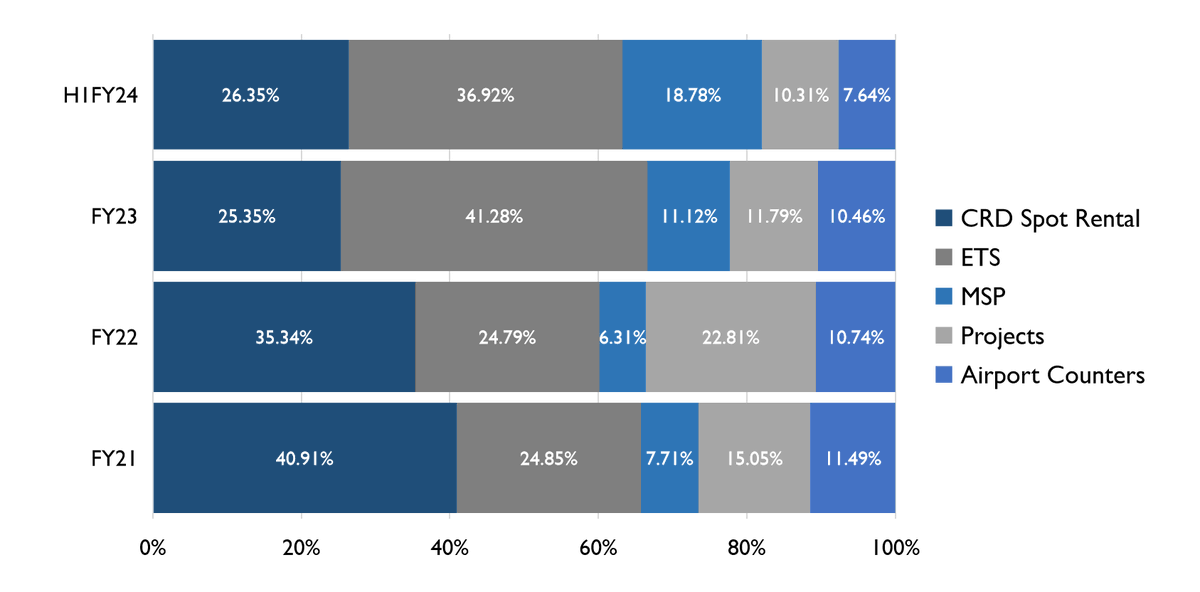Office365 Security Breach: Millions Lost From Executive Inboxes

Table of Contents
Common Attack Vectors Targeting Executive Inboxes
Cybercriminals employ various tactics to compromise executive inboxes. Understanding these attack vectors is the first step towards effective protection.
Spear Phishing and CEO Fraud
Spear phishing attacks are highly targeted, using meticulously crafted emails designed to impersonate trusted individuals or organizations. CEO fraud, a particularly insidious form of spear phishing, involves impersonating a senior executive to trick employees into transferring funds or revealing sensitive information.
- Example: An email seemingly from the CEO requesting an urgent wire transfer to a supplier.
- Social Engineering: Attackers leverage social engineering techniques, such as creating a sense of urgency or exploiting established trust relationships, to manipulate victims.
- Sophisticated Techniques: These attacks often involve detailed research on the target organization and its employees to personalize the phishing emails and increase their credibility.
Malware and Ransomware Delivery
Malicious attachments and links embedded within seemingly innocuous emails are common vectors for delivering malware and ransomware. Once opened, these malicious elements can infect systems, encrypt data, and disrupt business operations.
- Malicious Attachments: Infected documents, spreadsheets, or executables that automatically install malware upon opening.
- Ransomware Attacks: Ransomware encrypts critical files, rendering them inaccessible until a ransom is paid. This can lead to significant data loss and business disruption.
- Data Encryption: Advanced ransomware strains employ robust encryption algorithms, making data recovery extremely difficult without paying the ransom.
Exploiting Weak Passwords and Account Takeovers
Weak or reused passwords significantly increase the risk of account takeovers. Cybercriminals can use brute-force attacks, credential stuffing, or phishing to obtain passwords and gain unauthorized access to executive inboxes.
- Weak Passwords: Simple passwords or passwords easily guessable from publicly available information are easily cracked.
- Multi-Factor Authentication (MFA): Implementing MFA adds an extra layer of security, requiring a second form of verification beyond just a password.
- Compromised Credentials: Stolen credentials can provide attackers with direct access to sensitive data and communications.
Devastating Consequences of an Office365 Security Breach
The consequences of an Office365 security breach targeting executive inboxes can be severe, impacting various aspects of an organization.
Financial Losses and Reputational Damage
Data breaches can result in significant financial losses, including costs associated with data recovery, legal fees, regulatory fines (like those under GDPR or CCPA), and reputational damage. Loss of customer trust can lead to decreased sales and long-term financial instability.
- Data Breach Costs: The average cost of a data breach can run into millions of dollars.
- Regulatory Compliance: Non-compliance with data protection regulations can result in substantial fines.
- Reputational Damage: A security breach can severely damage an organization's reputation, impacting customer loyalty and investor confidence.
Operational Disruption and Business Interruption
A successful breach can cause significant operational disruption and business interruption. System downtime, data recovery efforts, and the investigation process can severely impact productivity and workflow.
- Business Disruption: Loss of access to critical data and systems can halt business operations.
- Data Recovery: Recovering encrypted or lost data can be a time-consuming and costly process.
- Lost Sales and Opportunities: Business interruptions can lead to lost sales and missed business opportunities.
Legal and Ethical Implications
Organizations have legal obligations related to data protection and privacy. Failure to comply with these regulations can result in significant legal and ethical repercussions.
- Data Privacy: Organizations must adhere to data protection regulations like GDPR and CCPA.
- Legal Compliance: Non-compliance can lead to legal action and substantial fines.
- Ethical Considerations: Organizations have an ethical responsibility to protect sensitive information and the privacy of their employees and customers.
Essential Security Measures for Protecting Executive Inboxes
Proactive security measures are critical to preventing Office365 security breaches.
Implementing Robust Multi-Factor Authentication (MFA)
MFA is a critical security measure that adds an extra layer of protection beyond passwords. It requires users to provide a second form of verification, such as a one-time code, biometric scan, or security key.
- Office365 MFA: Office365 offers various MFA options, including authenticator apps and security keys.
- Enhanced Security: MFA significantly reduces the risk of unauthorized access, even if passwords are compromised.
- Password Management: Combine MFA with strong password policies to further enhance security.
Advanced Threat Protection (ATP) and Email Security Solutions
Advanced threat protection (ATP) and robust email security solutions are essential for identifying and blocking malicious emails and attachments before they reach executive inboxes.
- Phishing Prevention: ATP solutions can identify and block phishing emails based on various factors, including sender reputation and email content analysis.
- Malware Detection: Real-time malware detection prevents the execution of malicious code.
- Email Security Solutions: Integrate reputable email security solutions with your Office365 environment for comprehensive protection.
Security Awareness Training for Employees
Regular security awareness training is crucial to educate employees about phishing scams, malware threats, and safe email practices.
- Phishing Awareness: Train employees to identify and report suspicious emails.
- Employee Training: Conduct regular training sessions to reinforce security best practices.
- Cybersecurity: Promote a culture of cybersecurity awareness within the organization.
Conclusion: Safeguarding Your Organization from Office365 Security Breaches
Executive inboxes are highly vulnerable targets for cybercriminals, and breaches can lead to significant financial and reputational damage. The consequences of an Office365 security breach are far-reaching, impacting not only financial stability but also operational efficiency, legal compliance, and brand reputation. Implementing robust security measures, including MFA, ATP, and comprehensive employee training, is crucial to establishing a strong defense. Don't wait until it's too late. Invest in robust Office365 security solutions today to protect your organization from costly and damaging Office365 security breaches and secure your executive inboxes. Proactive security is not just an expense; it's an investment in the long-term health and success of your business.

Featured Posts
-
 Marquez Puncaki Fp 1 Moto Gp Inggris Motor Mogok Mengganggu
May 26, 2025
Marquez Puncaki Fp 1 Moto Gp Inggris Motor Mogok Mengganggu
May 26, 2025 -
 Le Tour De France Nouveau Jeu De Management Rtbf
May 26, 2025
Le Tour De France Nouveau Jeu De Management Rtbf
May 26, 2025 -
 Naomi Campbells Potential Met Gala Absence The Wintour Connection
May 26, 2025
Naomi Campbells Potential Met Gala Absence The Wintour Connection
May 26, 2025 -
 Freed Hostages Agam Berger And Daniel Weiss To Participate In March Of The Living
May 26, 2025
Freed Hostages Agam Berger And Daniel Weiss To Participate In March Of The Living
May 26, 2025 -
 Hunger Games A Look At The Cast Of The President Snow Prequel
May 26, 2025
Hunger Games A Look At The Cast Of The President Snow Prequel
May 26, 2025
Latest Posts
-
 Dutch Opposition Parties Condemn Pvvs Housing Policy
May 28, 2025
Dutch Opposition Parties Condemn Pvvs Housing Policy
May 28, 2025 -
 Analyzing The Stalled Conversion Of Dutch Office And Retail Spaces Into Housing
May 28, 2025
Analyzing The Stalled Conversion Of Dutch Office And Retail Spaces Into Housing
May 28, 2025 -
 Obstacles To Residential Conversions Of Vacant Commercial Buildings In The Netherlands
May 28, 2025
Obstacles To Residential Conversions Of Vacant Commercial Buildings In The Netherlands
May 28, 2025 -
 Slowdown In Transforming Empty Offices And Shops Into Homes A Dutch Perspective
May 28, 2025
Slowdown In Transforming Empty Offices And Shops Into Homes A Dutch Perspective
May 28, 2025 -
 Conversion Of Vacant Commercial Properties To Housing In The Netherlands Challenges And Solutions
May 28, 2025
Conversion Of Vacant Commercial Properties To Housing In The Netherlands Challenges And Solutions
May 28, 2025
